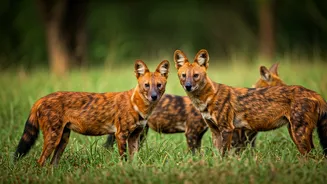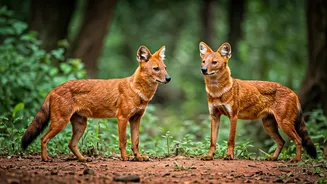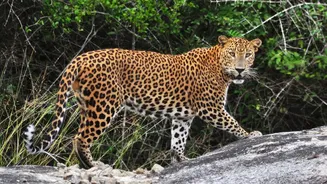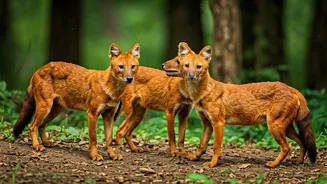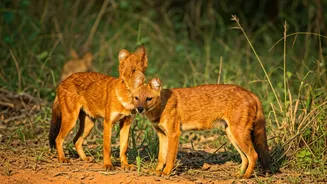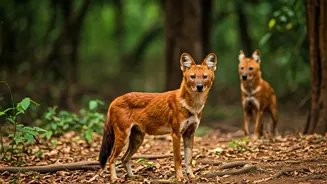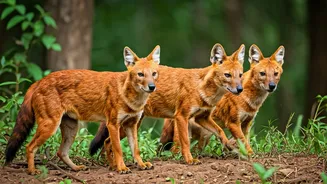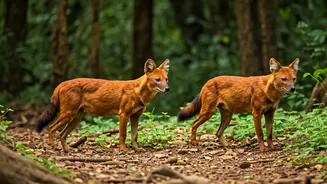Introduction to Dholes
Dholes, also known as Asiatic wild dogs, are social animals that live in packs. They are smaller than wolves but are fierce hunters, known for their cooperative
hunting strategies. These dogs are reddish-brown, with bushy tails and powerful builds, perfectly adapted for their forest and mountainous habitats. They play a vital role in the ecosystem, helping to control prey populations and maintain the balance of nature. Dholes are classified as endangered, facing threats from habitat loss, hunting, and competition with other predators, making it important to protect their natural habitats.
Kanha National Park
Kanha National Park, located in Madhya Pradesh, is a key location for dhole conservation. With diverse terrains, from grasslands to dense forests, it supports a wide variety of wildlife. The park’s efforts in protecting the dhole population include habitat preservation and anti-poaching measures. The park offers exciting opportunities for visitors to observe dholes, alongside other animals like tigers, leopards, and various species of deer. Planning a visit to Kanha during the cooler months, such as winter and early spring, provides optimal conditions for spotting these magnificent animals. Remember to book accommodations in advance and consider hiring a local guide to enhance your chances of seeing dholes.
Bandhavgarh National Park
Bandhavgarh National Park in Madhya Pradesh is renowned for its high tiger density and also provides habitat for dholes. The park features a landscape of hills, valleys, and dense sal forests. The historical fort of Bandhavgarh adds to the park's appeal, providing spectacular views. Dholes, being social hunters, often move within packs, which increases the likelihood of sightings. The park authorities implement conservation strategies focusing on habitat protection and monitoring of the dhole population to ensure their survival. To increase your viewing experience, arrange for a jeep safari and follow the rules and guidelines set by the park authorities. This will ensure that you have a safe and memorable visit.
Periyar National Park
Located in Kerala, Periyar National Park is known for its scenic beauty and rich biodiversity, and is a haven for dholes. The park surrounds the Periyar Lake, providing essential water sources and creating a favorable environment for various animals. Dholes are found in the dense forests, where they hunt deer and other prey. Periyar’s conservation efforts involve preserving the habitat and reducing human-wildlife conflicts. Visitors can enjoy boat rides on the lake to spot wildlife or undertake guided treks through the jungle. For the best chances to see dholes, visit during the dry season. Respect the park’s environment and regulations to assist in protecting the dholes and their habitat.
Tadoba National Park
Tadoba National Park in Maharashtra is another excellent location for dhole sightings. The park contains a variety of terrains, including teak forests, grasslands, and lakes, supporting a diverse range of wildlife. Conservation initiatives at Tadoba include habitat maintenance and anti-poaching patrols. This makes Tadoba a critical area for dhole conservation. During safari tours, visitors have opportunities to watch dholes along with other wildlife species, such as tigers and leopards. To make the most of your visit, consider taking both morning and evening safaris, when animal activity is often at its peak. Be prepared for extreme weather conditions during the summer months and take precautions accordingly.
